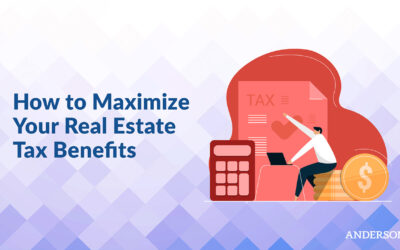The Child Care Tax Credit—officially known as the Child and Dependent Care Tax Credit (CDCTC for short)—provides taxpayers with children a much-needed tax break from childcare expenses.
How to Claim the Child Care Tax Credit
- Gather Care Provider Information
- Add Qualifying Care Expenses
- Complete Form 2441
Childcare is an expense that working parents often must pay out of pocket if they want to remain in the workforce. According to one poll conducted in 2019 by Child Care Aware of America, two-income households (that is, a family where both parents work) spent as much as 11 percent of their income on childcare. Compare this to other necessary and variable expenses, such as 8.6 percent of their income on food (according to 2020 data from the USDA), and 2.4 percent on gas (according to 2020 data from the Energy Information Association).
Childcare is expensive, and even more expensive in single-parent households, who spend, on average, around 36 percent of their income on childcare. To make matters worse, Americans of all income brackets have reported that only around 15 percent of the childcare facilities available to them are satisfactory. This puts a strain on parents when it comes to affordable child care that they feel comfortable with. The end solution for many parents is to just give up on pursuing upward career mobility.
For instance, as many as 61 percent of mothers with at least one child under the age of 6 years old said that their decision to remain out of the workforce was due to a lack of affordable and satisfactory childcare. Around 75 percent of postsecondary education dropouts (that is, from college or graduate school) said that they would have continued their educational path if not for a dearth of childcare options. Less than 28 percent of postsecondary students who are also parents complete a degree within a six year time frame.
As you can see, satisfactory childcare is a prerequisite for most parents to feel comfortable engaging in a professional career path, or even just working a service industry job to make ends meet. In most cases, if parents had the financial resources to pay for satisfactory childcare, they would be able to pursue the upward mobility afforded by education and professional development.
But working parents are not the only ones who benefit from a child care tax credit. A tax credit that incentives placing children in childcare means that children will be placed in a setting where they can develop intellectually and socially. The earliest years of a child’s life are formative, and studies have shown that children who receive quality care grow up to be healthier, earn higher wages, raise families, and avoid incarceration. Some of these studies have focused on low-income families and middle-income families; two tax brackets that certainly benefit from the added assistance of a child care tax credit.
The childcare and dependent tax credit also stimulates the childcare industry, which in recent estimates (albeit prior to Covid) had an output of almost $100 million at 695,000 small businesses (such as preschools and daycare facilities), employing 1.5 million workers. Childcare is a major industry, and economic incentives for taxpayers to send their children into childcare definitely has a trickle-down effect.
What is the Child Care Tax Credit?
What is the Child (and Dependent) Care Tax Credit? This credit allows a taxpaying household to claim a maximum credit of $8,000 for one child under 13 and $16,000 for two or more children (also under the age of 13). Remember, these are the maximum amounts. If your household adjusted gross income (or AGI) is below $125,000, you can claim 50 percent of your childcare expenses up to the maximum amount. The percentages continue to drop as the AGI increases. For example, you can only claim 20 percent of the expenses if your AGI is anywhere between $185,000 and $400,000…and you cannot claim any CDCTC if your AGI is over $400K.
If you are familiar with the Child Care Tax Credit from a past tax year, you may be surprised by these numbers. The American Rescue Plan of 2021 increased this tax credit from previous years. In 2020, for instance, the CDCTC was 20 percent to 35 percent of qualified childcare expenses. Moreover, the maximum amount a taxpayer could claim was up to $3,000 for one child and $6,000 for two or more children.
Starting in 2021, the Child and Dependent Care Tax Credit became a refundable tax credit, in contradistinction to a nonrefundable tax credit. This means that if your income is such that you actually don’t owe any taxes or because tax credits and tax breaks eliminate your tax burden, you can still claim a CDCTC and receive a refund from the IRS.
You may be wondering why the government has a vested interest in providing tax breaks to defray the cost of childcare expenses. As mentioned, childcare is a make-or-break concern for many families in terms of full participation in the workforce. Proponents of such tax reform ideologies purport that these types of tax breaks actually facilitate and stimulate economic activity, rather than just serving as free handouts for having children. Whatever the case may be, the Child Care Credit is not going away anytime soon, so if you have children and they are in childcare while you work, you should be taking advantage of this particular tax break (and all others you can get).
Is the CDCTC the same as the Child Tax Credit?
It’s important to distinguish the CDCTC from the Child Tax Credit.
The Child Tax Credit is a tax break available to parents with children under 17, and it is not tied to childcare expenses, specifically. Rather, it is meant to defray the numerous expenses of raising children, since families with children typically end up having less disposable income and more expenses. In 2021, partially in response to the Covid pandemic, the IRS began issuing advance payments of the CTC, most often through direct deposit into taxpayer bank accounts. The Child Tax Credit, incidentally, is worth as much as $3,600 for dependents under six and $3,000 for dependents over six and under 17. Advance CTC payments are half of the credit, with the other half available for claiming when taxpayers file their 2022 tax return.
Earned Income Tax Credit
In addition to the monthly child tax credit payment that is meant to defray the cost of childcare expenses, there are additional tax deduction options for eligible families, such as the Earned Income Tax Credit. Though the income tax credit (as it’s also called) or EITC (as it’s called for short) does not specifically require a qualifying child, you can reduce your tax liability more for every qualifying person. Filers can enjoy a tax break of up to $6,728, depending on their taxable earned income and family size. The EITC also is a refundable tax credit, so if the tax deduction puts your tax liability into the negative, you will get a refund.
Education Tax Credits
If you have a dependent child, you likely know that the costs don’t stop when they turn 18. Of course, your qualifying child is no longer a child anymore, legally, but you can still get a tax benefit through education tax credits, which are also refundable for up to 40 percent of the credit. Education tax credits allow you to write off up to $4,000 from the cost of college tuition annually (up from a recent $2,500) at a qualifying educational institution.
It’s good for parents to know about all these tax breaks, whether those breaks relate to defraying the cost of childcare or how much earned income a family brings in. The monthly payment afforded by the advance child tax credit is a tax reform that will likely help a lot of struggling families pay for child care services or anything else related to running a family in the wake of the economic downturn caused by Covid-19 shutdowns. Of course, there were also stimulus payment checks issued or provided with direct deposit. Coupled with advance monthly payments by the expanded child tax credit, families will (hopefully) not see their bank account dwindle as they attempt to meet their financial obligations. Take note that the IRS has set up an online portal so that you can notify them of any additional eligible child born in 2020.
Want to learn more about the tax credits and strategies available for reducing your tax liability? Sign up for the Anderson Advisor’s Tax Wise Workshop!
How Do I Qualify for the Child Care Tax Credit?
Going back to the Child Care tax Credit—in order to claim the credit, you must provide care for the child you are claiming a CDCTC for. By care, we mean that the child is a dependent, not that you are the one providing the childcare of a preschool or daycare facility.
For children of divorced parents, the parent with custodial care is the one who can claim the CDCTC. You can also claim a spouse as a dependent if they are physically or mentally unable to care for themselves, so long as they live in the same residence. Remember that CDCTC stands for child and dependent care tax credit.
The expenses that you pay and use towards qualifying for this tax credit must be the costs of child or dependent care that you utilize while working or looking for work. Putting the kids in a weekend program to give yourself a break, or watching the kids take karate lessons after school, do not count—not that those examples aren’t much needed or rewarding.
Said care must be provided by a legal dependent care center that cares for more than six children or dependents for payment. This center must comply with local laws and ordinances, which usually means being licensed. In this way, the IRS makes sure that the CDCTC stimulates the childcare industry—sending the kids to a friend’s house or a playgroup and providing under-the-table cash compensation will not be something you can use to claim the CDCT.
You can, however, claim the CDCTC for care provided at home (your own home), not just for the care itself, but for cooking and cleaning as well, if these tasks relate to the dependent. In some cases (despite our previous example of a karate class), you can claim after school programs for the CDCTC, so long as the primary motivation for participation is childcare so that you can work or look for work.
Keep in mind that even if you are paying someone to come over to provide childcare and paying them in cash, you will need to take down their information and provide the IRS with an EIN or Social Security number on the paperwork for claiming your CDCTC. While the ethics of under-the-table childcare arrangements is beyond the scope of this article, it is something you’ll need to consider if you want to claim a child and dependent care tax credit. Everything with the IRS must have a paper trail, including in home childcare or dependent care.
You cannot claim the CDCTC for transporting the child to and from childcare. This is actually pretty similar to commuting for work purposes, which cannot be written off against your taxes.
You cannot use the CDCT to defray the cost of tuition for kindergarten and above. That means that you will not get a tax break for sending your child to private school, even if that’s your preference or you find it a necessity because of the public schools in your area. The reasoning given by the IRS here is that even if you did pay out-of-pocket to send your child to a private school so that you could work, they would have the option to go to a public school free of cost.
This does not apply to the cost of pre-K education, though. These childcare costs are almost always out of pocket, and if parents did not put their children into these childcare options (or pay for in-home care) they would not be able to work.
You cannot use the CDCTC for overnight camping trips, since most parents don’t work at night. However, you can write off summer camps, since the camp provides childcare during the day so you can work. If the camp offers an overnight trip, it is usually built into the pricing of the camp tuition, so you may be able to write off the entirety of the expense—check with your accountant if you have any questions.
You cannot use the CDCTC for the assistance of a chauffeur to shuttle the dependent around, or a gardener who cares for the property of a resident who is claimed as a dependent. You can use the CDCTC if the person providing care transports your child to and from said care (such as a bus that brings disabled adults to an adult daycare facility). Speak to your tax advisor if you have any questions about your specific childcare and/or dependent care situation.
How Much is the Child Care Tax Credit?
As mentioned, the Child Care Tax Credit (as of 2021) is up to $8,000 for a single dependent and $16,000 for two or more. These numbers are the maximum amount you can claim. Otherwise, the amount you can claim is a percentage of qualifying expenses, starting with up to 50 percent if your AGI is less than $125,000, 20 percent if it’s below $400,000 and above $185,000, and nothing at all if your AGI is above $400,000.
These numbers are a sampling of the percentages; to see the full range you need to peruse the table provided by the IRS. In short, the exact amount of the Child Care Tax Credit depends on your income and your qualified expenses. Keep in mind that the CDCTC is just one of many ways to pay less taxes.
How to Claim the Child Care Tax Credit
1. Gather Care Provider Information
IRS Publication 503, Child and Dependent Care Expenses, provides detailed information on qualifying expenses for the CDCTC. Keep track of basic information regarding the places, people, and services you use for childcare, including their SSN (if an individual) or their EIN (if it is a place of business), because you will have to furnish that information later on Form 2441.
2. Add Qualifying Care Expenses
This could include, for example, the tuition statement for a preschool or the bill from a drop-in daycare center. If you are paying for in-home care, make sure to get an invoice, even if you are paying the person in cash.
Also keep in mind that if you pay more than $600 over the course of the tax year, you may be responsible for filing additional paperwork. Create a list of qualifying expenses and save records throughout the year, that way, when it comes time for tax season, you can add them all up and maximize your credit.
3. Complete Form 2441
This is the tax form the IRS issues to capture information about qualifying expenses. After completing the 31-line worksheet, you will append the final amount to your Form 1040 as the amount you are claiming for your Child and Dependent Care Tax Credit. The plethora of forms to fill out for tax credits of all kinds can be overwhelming, so it’s often helpful to work with someone qualified who can assist in tax planning. An accountant or tax advisor, like those with Anderson Advisors, can also help you make sure you’re optimizing all potential tax deductions and tax credits.
The Child and Dependent Care Tax Credit Stimulates the Economy While Helping Working Parents
It’s a common misunderstanding, but the Child and Dependent Care Tax Credit is not the same as the Child Tax Credit. While the latter is an incentivizing tax credit meant to defray the increased expenses of raising children and the related decrease of disposable income, the former is meant to help working parents or guardians defray the cost of childcare so that they can work.
The CDCTC is an excellent incentive for parents to place their children in childcare so that they can work or look for work—a crucial component of a healthy economy. Taking advantage of the CDCTC is as simple as keeping track of the qualified expenses from the people or places providing care, and then providing that information to the IRS via Form 2441.
If you’d like to learn more about the variety of tax strategies that can be used to lower your tax burden and possibly claim refundable credits, check out Anderson Advisor’s Tax Tuesday Webinar.
Free Strategy Session with an Anderson Advisor
Receive a detailed risk assessment to assist in lowering problem areas that could wipe out all of your assets with one wrong move. Speak with an Anderson Professional Advisor to get your FREE Strategy Session. Limited-Time offer: FREE (a $750 value.)














